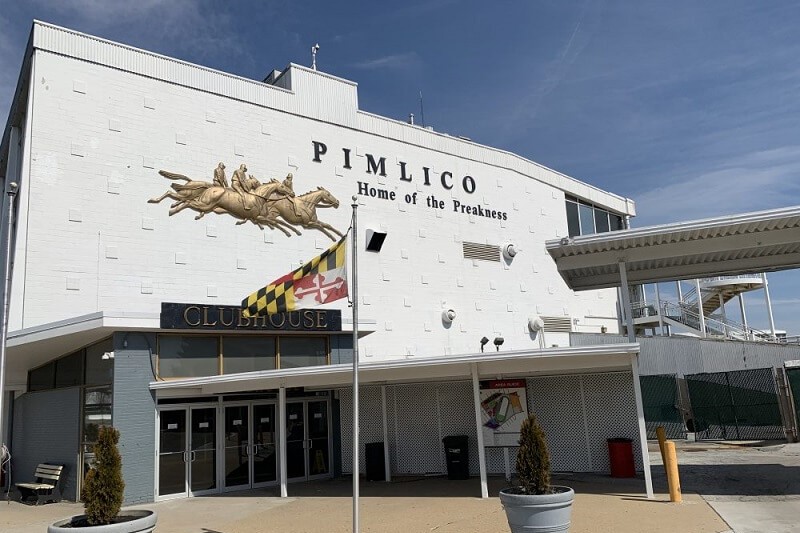For the past few years, I have written about why it made sense to close Pimlico Race Course and consolidate Maryland thoroughbred racing at Laurel Park. This consolidation would have resulted in moving the second leg of the Triple Crown — the Preakness Stakes — to Laurel Park. This proposal ignited fierce debate within the racing industry, racing fans and non-racing fans who did not want to see Baltimore City lose this marquee event.
This past October, the Stronach Group, representatives of Maryland’s racing industry and the City of Baltimore developed a plan to keep the Preakness at Pimlico. The plan has been formalized in the form of legislation entitled, “The Racing and Community Development Act of 2020” (SB987/HB1056). The plan calls for both Laurel Park and Pimlico to be razed.
The plan calls for Laurel to have new backstretch housing, stabling for nearly 1,600 horses and a new clubhouse. At Pimlico, the plan calls for the track to be rotated 30 degrees and shortened by approximately 1/16 of a mile to create better development opportunities on the property. The plan also call for significant development to the surrounding area of Pimlico. The Maryland Thoroughbred Horsemen’s Association General Counsel Alan Foreman proclaimed, “We [Maryland] will become the epicenter of racing in the United States.”
While I applaud Mr. Foreman’s exuberance, I am not convinced this plan will result in Maryland overtaking Kentucky’s place as the epicenter of racing in the United States with its world renowned breeding farms, horse sales venues, and home of the Kentucky Derby. At best, Maryland can strive to be a strong second behind Kentucky.
There is no shame in second place. Just look at the great horse Alydar who came in second in all three Triple Crown races behind Affirmed in 1978 only to go on to become a more successful sire than Affirmed. Is it a stretch to think that a refurbished Pimlico can revitalize an entire neighborhood? What has stopped Baltimore City leaders from improving the neighborhoods surrounding Pimlico during the last five decades? Let us not forget that there are only 12 racing days at Pimlico.
It is time for the business community, elected officials, and the local media to step up and start advocating and supporting thoroughbred racing in Maryland. Saratoga in upstate New York and Keeneland in Lexington, Ky., are two racetracks where the business community, elected officials, and the entire community rally behind the race meets. That does not happen in Maryland. It is time for that to change.
When I walk through downtown Saratoga or downtown Lexington I know I am in the midst of a very special race meet. Baltimore City needs to take a page from Saratoga and Lexington to market the Pimlico meet.
Pimlico is a quick Uber ride from many colleges. Each day of its meet, Pimlico should partner with local colleges to bring students and faculty to the track. The Greater Baltimore Committee (GBC) pops up every year around this time and joins in the chorus to keep the Preakness at Pimlico. But the question is, what do the GBC and Baltimore’s business community do to support racing at Pimlico?
Laurel Park will continue to be a year-round training and racing venue. It is located just a few miles from the University of Maryland and Washington, D.C. There should be a greater effort to get Terps and alumni to hold events at Laurel Park.
Since December 2014, when Sal Sinatra became president and general manager of the Maryland Jockey Club (Pimlico and Laurel), the fan experience has improved significantly. In addition, the racing product keeps getting better. With the recent appointment of Craig Fravel as the CEO of Racing Operations for the Stronach Group, after leaving his role as president and CEO of the Breeders’ Cup, this is the perfect time to produce and execute a first rate marketing and outreach plan to enhance Maryland racing.
Maryland has tremendous assets in the world of thoroughbred horse racing. The most well-known asset is the Preakness. In addition, breeding farms and the Fair Hill Training Center in Cecil County create the foundation to make Maryland a standout in the thoroughbred racing world.
Pimlico and Laurel are where hall of fame jockeys Edgar Prado, Chris McCarron, and Kent Desormeaux first made their mark. A revived Maryland racing scene could mean that top jockeys will want to stay in Maryland and make it their home throughout the year.
The proposed legislation — if done correctly — has the opportunity to transform Maryland racing and improve the communities around Pimlico. Although there will be some questions and skepticism about the plan, I look forward to it serving as a starting point for better days for Maryland racing.
— KEVIN O’KEEFFE
The writer is an attorney who has owned horses and served on national nonprofit racing boards in Kentucky. Twitter: @kokhorseracing



 Creative Commons Attribution
Creative Commons Attribution